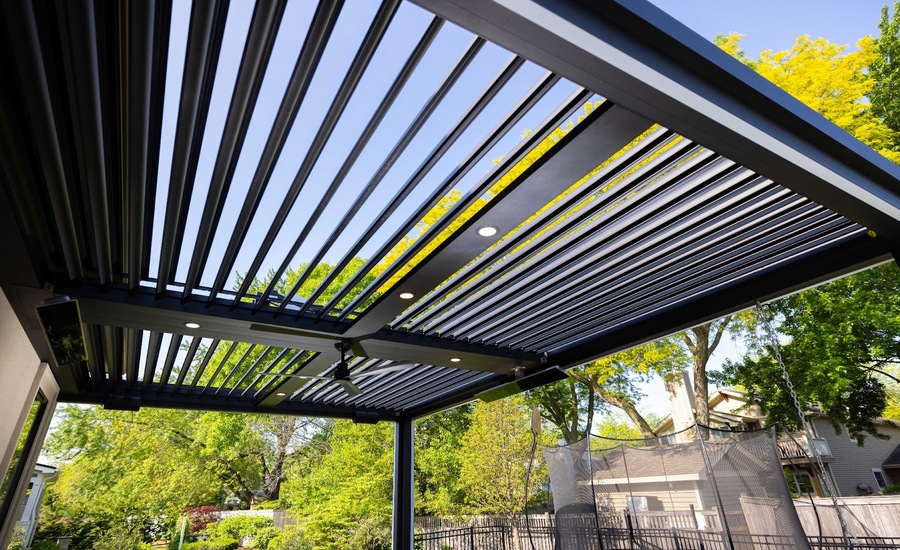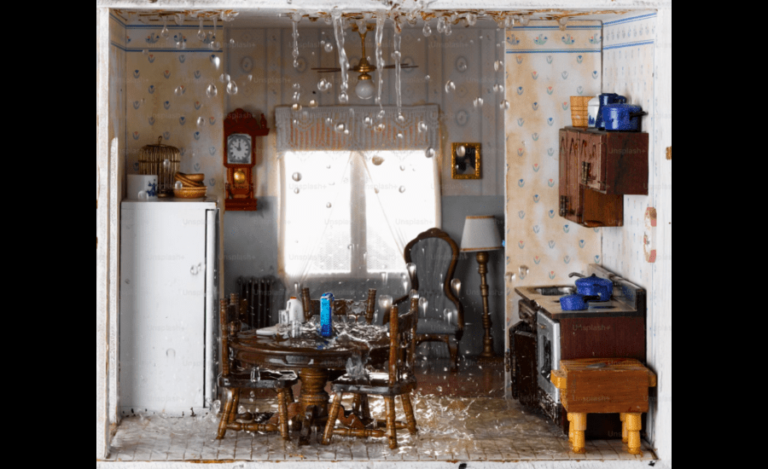Green Architecture: How Louvered Roofs Promote Sustainable Outdoor Living
In recent years, the trend toward sustainable living has skyrocketed. With an increasing awareness of environmental issues, more people are embracing eco-friendly designs in architecture and lifestyle. One of the most innovative solutions in this area is the louvered roof system. Particularly the designs by StruXure, these adaptable, modern roofs are making waves in the world of green architecture.
But what exactly are louvered roofs, and how do they contribute to sustainable outdoor living? Let’s dive into the details of how these structures can reduce energy consumption, enhance natural ventilation, and support a more environmentally conscious lifestyle.
What is a Louvered Roof?
To kick things off, you might be wondering, “What exactly is a louvered roof?” A louvered roof is an outdoor shading system that features adjustable slats (or louvers) to allow precise control over sunlight, ventilation, and weather protection. Unlike traditional fixed roofs, these structures are dynamic, offering flexibility for various weather conditions. You can open the louvers for maximum sunlight, close them for complete shade, or adjust them to your desired angle for just the right amount of airflow and light.
StruXure’s louvered roofs are an industry leader in this niche, known for their cutting-edge technology and design, perfectly blending modern aesthetics with sustainability. Now, let’s explore the ways in which these roofs contribute to green architecture.
Reducing Energy Consumption with Smart Design
One of the core tenets of green architecture is reducing energy consumption, and StruXure’s louvered roofs deliver big time on this front. The roofs are designed to naturally control the climate of your outdoor space, reducing the need for artificial heating, cooling, or lighting. How? By giving you control over natural sunlight.
Natural Lighting
Imagine enjoying the perfect balance of shade and sun all day long, without ever flipping a switch. With a louvered roof, you can adjust the slats to allow more natural light in the morning when it’s cooler or close them for shade in the heat of the day. This reduces your reliance on electricity for outdoor lighting or even interior cooling during hot days, especially when the system is connected to sensors that automatically adjust based on sunlight intensity.
Temperature Control
Have you ever walked into a room and felt like it was either too hot or too cold because the windows were letting in too much sun? A louvered roof system can fix that for outdoor spaces. By controlling the amount of sunlight and ventilation, these roofs naturally regulate temperature, reducing the need for energy-consuming HVAC systems. This means lower utility bills and a lighter carbon footprint.
Harnessing Natural Ventilation for Comfort
Ventilation is crucial in both outdoor and indoor spaces. While conventional outdoor setups might rely on fans or air conditioners to stay cool, a louvered roof promotes natural ventilation, allowing fresh air to circulate freely. How does this work?
When you open the louvers, air flows through the gaps, cooling the space naturally. This is especially useful in warm climates where keeping air moving can significantly reduce the perceived temperature. Essentially, you’re allowing nature to do the work for you, without the need for energy-consuming devices. In addition to lowering energy usage, this also improves air quality, which benefits your health and the environment.
Cross-Ventilation Design
A well-thought-out louvered roof system also contributes to effective cross-ventilation. Cross-ventilation occurs when air flows naturally between different openings, creating a cooling breeze. In combination with open doors and windows, the louvered roof can enhance airflow within your home or business, ensuring that your space stays cool, even on the hottest days, without relying on fans or AC.
Using Eco-Friendly Materials for Sustainability
Let’s talk about materials. The architectural design of a structure is one thing, but the materials used are just as important when discussing sustainability. StruXure’s louvered roofs are constructed from durable, recyclable materials, often aluminum, which is known for its long life span and low environmental impact.
Why Aluminum?
Aluminum is a fantastic choice for eco-conscious homeowners because it’s lightweight, strong, and incredibly recyclable. In fact, recycled aluminum uses only 5% of the energy required to produce new aluminum. By choosing materials that are long-lasting and eco-friendly, StruXure ensures that their louvered roofs align with the principles of green architecture.
Additionally, the longevity of these roofs means fewer replacements, which reduces waste over time. This focus on durable, sustainable materials helps to further minimize the environmental footprint of your outdoor living space.
Water Management and Conservation
Did you know that louvered roofs can also play a role in water conservation? Many systems, like those from StruXure, are designed with integrated gutters and drainage systems that direct rainwater efficiently. Instead of allowing rain to puddle and potentially cause damage or waste, these systems can direct water where it’s needed.
Rainwater Harvesting
In some setups, you can even pair your louvered roof with a rainwater harvesting system. This allows you to collect rainwater and use it for various purposes around your home, such as watering plants or even flushing toilets. In regions where water conservation is critical, this kind of innovation goes a long way in creating a sustainable living environment.
Weather Adaptability for Long-Term Use
Another standout feature of louvered roofs is their adaptability to different weather conditions. Whether it’s rain, intense sun, or wind, these systems can be adjusted to offer optimal protection and comfort.
Rain Sensors
Some louvered roof systems, like those by StruXure, include rain sensors that automatically close the louvers when it starts raining, protecting your outdoor furniture and keeping the space dry. This means you won’t need to dash outside every time it rains, and your furniture will last longer because it’s not exposed to harsh weather.
By adapting to different weather conditions, louvered roofs provide a comfortable outdoor environment year-round while reducing the need for additional energy-consuming devices like heaters or coolers.
Maximizing Outdoor Space for Sustainable Living
In today’s world, outdoor spaces are becoming extensions of our homes. Whether it’s a backyard, patio, or rooftop, the ability to use these areas year-round, in a sustainable way, is more important than ever.
Eco-Friendly Outdoor Living
With a louvered roof, you can enjoy your outdoor space regardless of the weather, without compromising on your eco-friendly goals. These roofs allow you to create outdoor rooms that are functional, comfortable, and environmentally conscious. Instead of building additional indoor space, which requires more materials and energy to maintain, you can maximize what you already have, making it both cost-effective and green.
Incorporating Louvered Roofs into Green Building Projects
Finally, let’s talk about how louvered roofs fit into the larger picture of green building projects. Whether for residential homes or commercial buildings, integrating a louvered roof system aligns perfectly with LEED (Leadership in Energy and Environmental Design) certifications and other green building standards.
Sustainable Building Practices
Because they reduce energy consumption, use eco-friendly materials, and promote natural ventilation, louvered roofs contribute to a building’s overall sustainability score. They can be incorporated into passive solar design, where the orientation and structure of a building are designed to make the best use of the natural environment.
By choosing a louvered roof, builders and homeowners can earn credits toward green certifications, making their properties not only environmentally friendly but also more valuable in the market.
Final Thoughts
Louvered roofs, particularly those designed by StruXure, are more than just an architectural trend—they’re a key component of green architecture. By promoting natural ventilation, reducing energy consumption, and utilizing eco-friendly materials, these systems offer a sustainable solution for modern outdoor living. Whether you’re looking to enhance your backyard or integrate sustainable design into a larger project, a louvered roof is a smart, environmentally friendly choice that pays off in both comfort and cost savings.
FAQs
1. Can a louvered roof really help lower my energy bills?
Yes! By controlling sunlight and airflow, a louvered roof reduces the need for artificial heating, cooling, and lighting, helping you save on energy costs.
2. Are louvered roofs eco-friendly?
Absolutely. StruXure’s louvered roofs are made from recyclable materials and designed to enhance natural ventilation and temperature control, making them a great choice for sustainable living.
3. How does a louvered roof handle rain?
Many louvered roofs come with built-in rain sensors and drainage systems, ensuring that rainwater is efficiently managed without damaging your outdoor space.
4. Can I use a louvered roof year-round?
Yes, these roofs are designed to adapt to various weather conditions, making them usable in different seasons for year-round outdoor comfort.
5. Is a louvered roof worth the investment?
For eco-conscious homeowners, the energy savings, environmental benefits, and enhanced outdoor living experience make a louvered roof a valuable investment in the long run.






